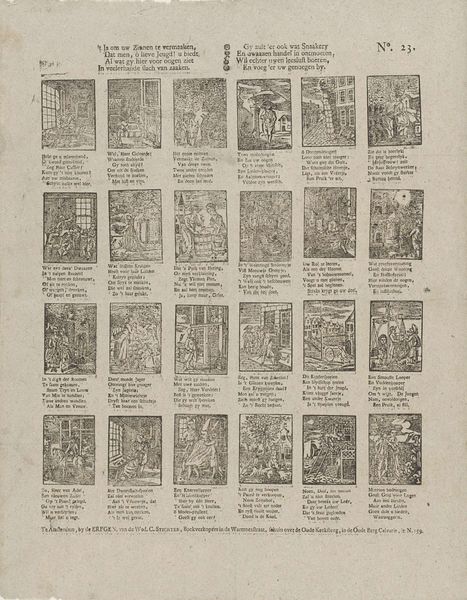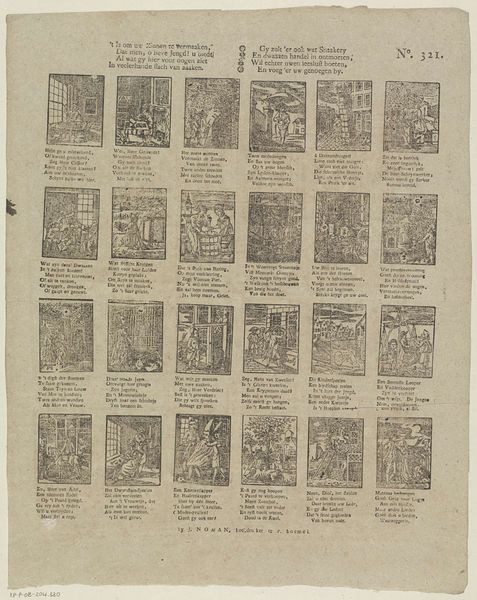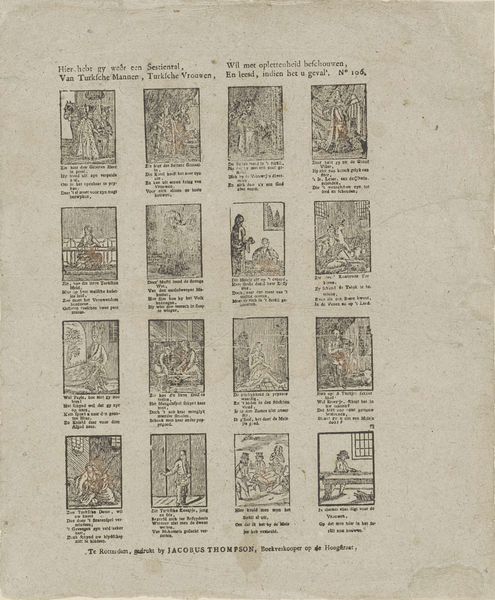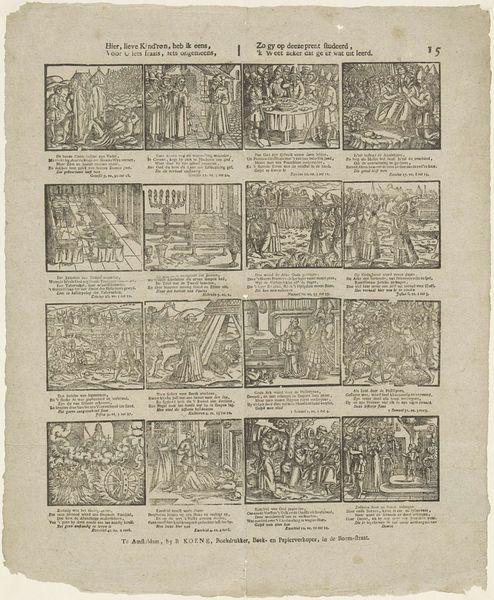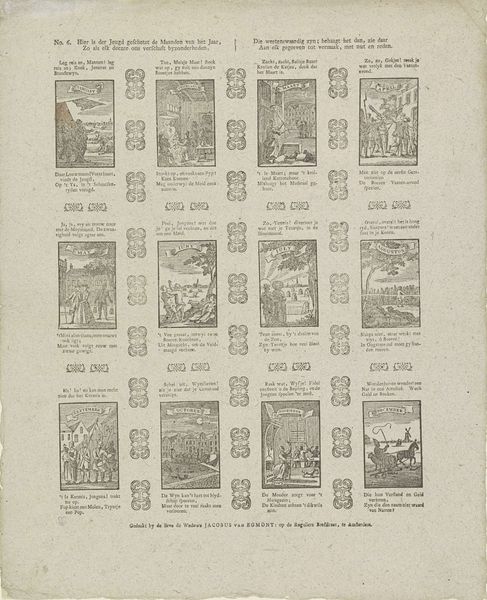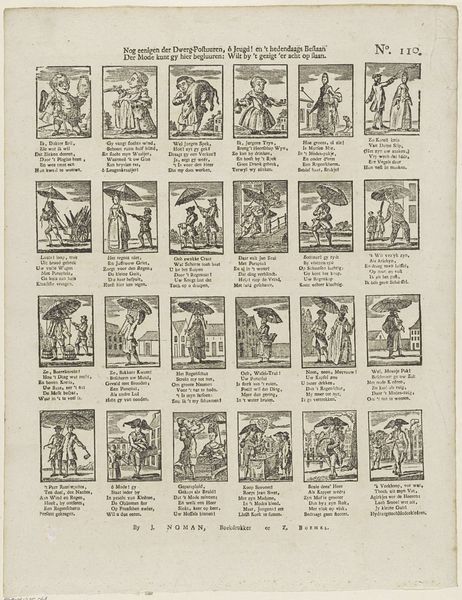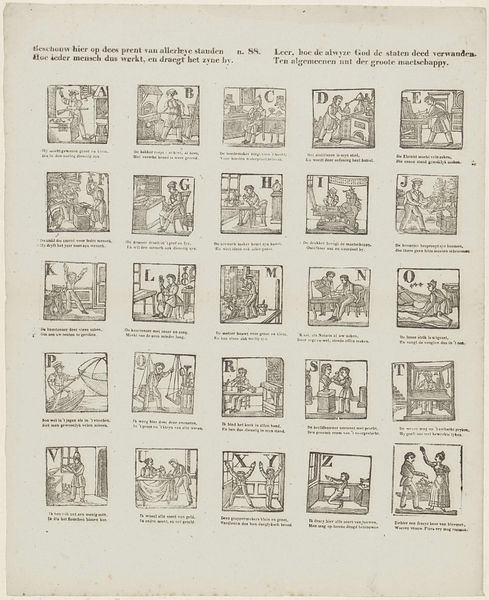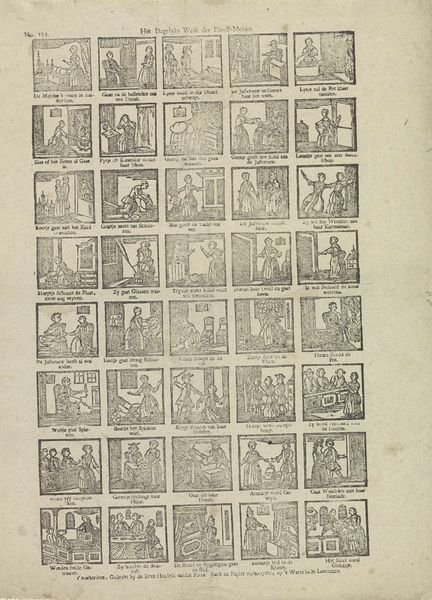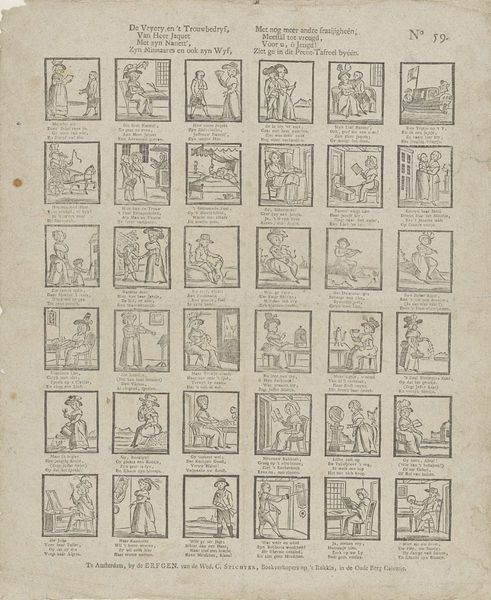
Zo ge aartigheden wilt beminnen, / Zet op deez' prentjes dan uw zinnen, / Tot uw vermaak geschikt, ô jeugd! / En voeg uw leeslust by uw vreugd 1715 - 1813
0:00
0:00
jansroortman
Rijksmuseum
graphic-art, print, paper, engraving
#
graphic-art
#
narrative-art
#
dutch-golden-age
# print
#
paper
#
genre-painting
#
engraving
Dimensions: height 410 mm, width 331 mm
Copyright: Rijks Museum: Open Domain
Curator: Here we have a fascinating print from between 1715 and 1813, titled "Zo ge aartigheden wilt beminnen...". It's an engraving on paper by Jan (Sr.) Oortman, currently held in the Rijksmuseum. It depicts a series of small scenes; it almost feels like a comic strip. How would you interpret the visual impact of this compilation of vignettes? Editor: It's definitely busy! The sheer number of images is a little overwhelming. The details within each scene are also a little hard to discern due to the engraving. I'm curious though, what would someone at the time, and maybe even Oortman, have thought of it? Curator: It's critical to think of the printing process and the accessibility this afforded. This isn’t some unique oil painting destined for a wealthy patron’s private collection. It’s a print! This implies a different kind of consumption, perhaps more democratic and intended for broader circulation. Editor: That's a great point. The availability of printed images likely impacted its meaning. So what stories would these pictures be depicting, what meaning would the consumer be trying to access, and how does their context add significance? Curator: It may seem didactic. Look closer, are they moral tales being visually reproduced on paper, or is something else at play here? Who could read this and why? Who would consume these works, and for what purpose? Editor: So rather than individual artistic genius, the emphasis is on production, consumption, and the social impact of these prints. They become less about aesthetics and more about the material conditions of their creation and distribution. It's interesting to view the artist as one part of a larger system! Curator: Exactly! We move beyond simple aesthetic appreciation and engage with the economic and social forces that shaped the art itself and continue to imbue them with significance to this day.
Comments
No comments
Be the first to comment and join the conversation on the ultimate creative platform.
